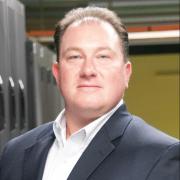Migration Services
Undergoing a migration to a new data center or a colocation provider for the first time is a daunting task. It is time-consuming and takes impeccable planning down to the smallest detail. So how do you go about establishing a strategy that will allow a smooth transition of your hardware and IT environment?
Prepare, Prepare, Prepare
You must have a detailed inventory of all assets that are going to be transferred and the reasons why they are transferring to a data center. The ‘why’ behind the move can vary from a merger or acquisition, more processing power needed, downsizing/right-sizing the environment, capital savings initiative or various other reasons, but understanding the motive will help your IT staff identify potential challenges that may arise during the move. Knowing all of the applications that you are moving is also paramount. Fully audit all of your applications, servers, storage, networks and operating systems before the transition.
Once all of the IT assets are known and documented, the IT staff needs to figure out all of the complex interdependencies of each element. It’s also critical to determine how and when the application is used and by whom in order to map out the ideal migration of that specific application. This will help you decide when to migrate as there will be downtime associated with the migration and you want to avoid this downtime during peak usage of the application. When you are moving locations or between physical and virtual environments it is the perfect time to ask yourself if things are laid out in the ideal manner or are some things being done in a certain manner just because that is the way it has always been done.
Get Moving
If you are physically moving hardware, be careful and make sure everything is backed up. Hardware can be damaged during a move causing data loss, so use the correct packaging material and be careful. Even traffic can cause havoc in a physical move. Do not attempt to move your hardware during rush-hour traffic. If you are getting rid of old equipment, make sure it is wiped clean. If you are moving virtually, set the amount of acceptable downtime and communicate the plan to end users and employees. Use multiple network connections for the migration and monitor the data transfer. Test and monitor the data migration before, during and after the migration process. Leverage the expertise and experience of your data center as you plan and execute the migration.
How Expedient Can Help
Expedient’s physical migration services offer an un-rack, pack, ship and re-rack migration strategy – resulting in the secure transitioning of your physical servers, hardware and physical storage equipment into an enterprise-class data center.
With Expedient’s virtual migration services, our team will coordinate the physical transport or over-the-wire transport of your servers – identifying critical components and developing a strategic migration plan that ensures minimal disruption to data, services and application availability.
If you are migrating your current Active Directory and Exchange email environment into a hosted or dedicated environment, Expedient’s Exchange migration services offer you the full support of our best practices, expert resources and support personnel – meaning a successful migration with minimal disruption to your daily workflow.
Expedient’s migration solutions ensure a seamless, efficient and secure transition and are expertly engineered by our data center technicians, solutions architects and 24x7x365 support staff.
